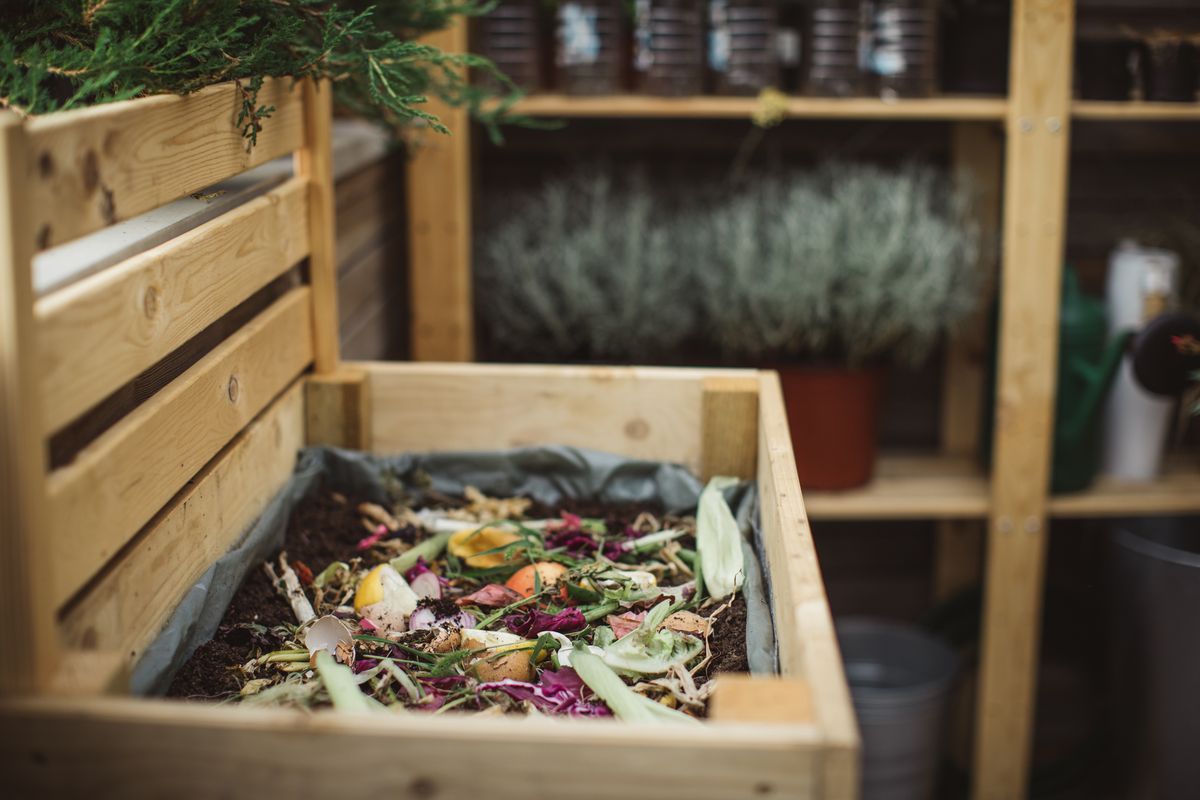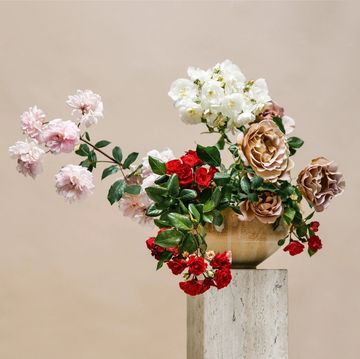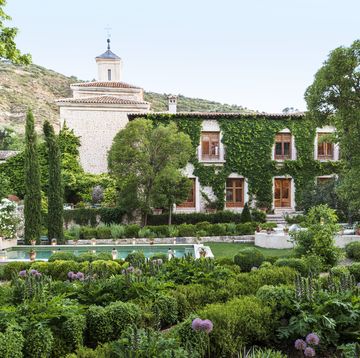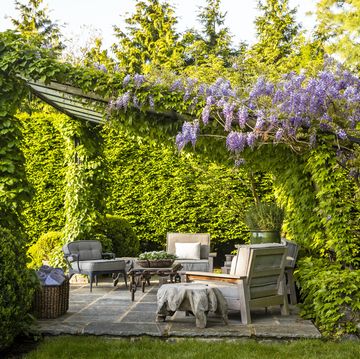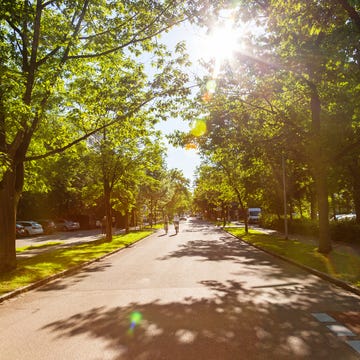Matthew Nesbitt, owner and operator of Field Culture Compost in Birmingham, Alabama, has talked about central Alabama's need for a large-scale composting service for years, but he never expected to be the one to revolutionize it. After 11 years of working in restaurants and learning from local farmers who brought in fresh produce and meat each day, he became passionate about gardening, farming, and agriculture, which led him to an internship with Serenbe Farms, an organic vegetable farm outside Atlanta. That internship gave him a deep knowledge of soil health, composting, and its vast impact on our planet.
"I got into soil, plant, and people health while I was there and began to see how all of that is tied together: Soil health dictates health of a plant, which dictates the health of a person," Nesbitt says. "That means soil health has a direct impact on growing food for the community you live in. I wanted to know more about that, and using compost on an organic farm is a no-brainer as it helps plants grow naturally and helps soil health by breaking up clay aggregates to open up soil structure for water and air to filter through and help with growth."
Nesbitt says getting into composting was a natural evolution for him, as he was always interested in watching things break down and was baffled when he found out how much local farmers paid to bring in compost all the way from Vermont—which isn't sustainable, especially for young farmers—when people in Alabama create just as much compostable food waste. He ended up completing a training course for composter operations in 2019 and, with help from several partnerships with local business and the University of Alabama at Birmingham, Field Culture Compost launched in late 2020 to educate the city on the importance of composting and make it easier to get rid of food and paper waste without directing it to a landfill. Similar to a garbage pick-up service, Field Culture Compost comes by weekly or biweekly, depending on your preference, and picks up your composted materials in a bucket. This is a great option, especially for those with small gardens who may not need all the composting materials they create, and the company offers a wide variety of educational resources to teach you how to compost properly.
More From Veranda

But while a delivery service is extremely beneficial for homes with large families or who eat a lot of meat, dairy, and eggs, creating your own compost out of vegetable and fruit waste is a surprisingly simple tool for creating a thriving, vibrant garden without chemicals. Here, Nesbitt shares his advice on all things garden composting to best create the garden of your dreams while keeping sustainability, your health, and the health of local pollinators in mind.
What is Composting?
Nesbitt defines composting as "the biological process of turning organic waste into organic soil amendment," not into actual topsoil, dirt, or manure, as it often mistaken for. This organic soil amendment, or compost, is made of carbon, water, soil, and nitrogen. But it's not exactly as simple as that.
What is Compost?
As mentioned above, compost is a combination of carbon, water, soil, and nitrogen, with the carbon, or "brown sources," coming from items like shredded cardboard and paper that hasn't been printed on and wood chips, and the nitrogen, or "green sources," coming from vegetal waste. This can be anything from apple cores to the outer leaves of cabbage.
"Creating compost is all about taking these organic materials and combining them with other organisms and materials to balance the amount of carbon and nitrogen, then adding the proper ratios of oxygen and water to let nature then do its thing," says Nesbitt. "It’s all about providing the best atmosphere for important types of bacteria and fungi to thrive, creating a method of decomposition that, when done properly, makes a wonderful black soil-like material to use in the garden."
How to Create a Composting Garden
Creating Compost
For those just beginning to compost, and especially those with outdoor spaces that lean on the smaller size, Nesbitt advises sticking to only using waste from fruits, veggies, tea leaves, and even coffee grounds for your nitrogenous "green sources," and then any cardboard, paper, and leaf waste for the carbonic "brown sources" to start putting in your composting container of choice. He says it's likely best for the average person to avoid putting meat or dairy in there, as it can start to smell and attract animals.
"If used properly, and depending on the needs of the soil, you're adding about four times as much soil to one amount of compost." says Nesbitt. "However, you have to know what your soil needs to know how much to use. Does your garden's soil need more aggregation because it’s too compact and has lots of clay? Is it too sandy and needs water retention properties? That will determine how much compost you need to add. The good thing though, is that compost is a stable product, so it's very hard to overdo it if it's well-made."
Caring for Your Compost
Once your container is filled with your composting materials, you have to keep nurturing your compost, just like your garden. The simplest way to make sure it's in good condition is to get a rake and aerate your compost collection. He also suggests investing in a compost tumbler on Amazon that will spin your compost around to add in more air.
"Home gardeners can make amazing compost if done property. It just takes some maintenance and tending to, as most things do." he says.
Nesbitt advises choosing a spot for your compost that's not too out of the way so you won't forget to check on it, while also being far enough from your patio or frequently trafficked outdoor areas, as it can create a slight odor.
"The hardest part is making sure you have enough carbon material to balance out the vegetable waste," says Nesbitt. "You usually want to go for a 3-to-1 carbon-to-nitrogen ratio. Ninety-nine percent of the time, trouble comes when you’re too focused on the vegetable waste but not balancing all that with carbon, especially in the summer, when you have no leaves to add in. This means you’ll end up with a very nitrogenous matter that starts to stink."
If it does start smelling, there's a simple fix: Just add more carbon materials. If your pile is too dry (you can tell by if it falls apart when you grab a handful and squeeze it), just add water to it. Nesbitt says your compost should always feel like a damp sponge.
Why a Composting Garden Is Worth the Effort
"The act of composting is for anyone who wants to grow flowers for beautification, grasses for landscaping, trees for shade, or fruit and vegetables for consumption," Nesbitt says. "It makes sense to use the exceptional resources that you already have—the food waste you create—to then be recycled back into the system for more growth. We got away from that for so long, and I’m really starting to see a return to this concept."
Nesbitt and his team at Field Culture Compost see food waste and scraps as valuable resources for creating new life. He says most of us, even if we don't know much about composting, know the economical, health, and environmental detriments of landfills to a community, and so much of that material can go back into our gardens and farms to make more beautiful blooms and nutritious plants for a healthier world.
"Compost itself is a wonderful fertilizer, natural and organic, that doesn't leach chemicals and isn't created by petroleum," says Nesbitt. "It’s very stable in the soil and great for water retention, so there’s nothing really wrong with it if it’s made well. Put it in soil and—boom—plants turn greener and bigger."
He says if you looked at the use of chemical fertilizers and compost on a graph, the chemical fertilizers would show a sharp spike and then a major drop. However, if you opt for using compost to make your azaleas and tomatoes grow, the plants will absorb only as much as they need, and whatever nutrients are left will actually stay in the soil and continue breaking down for when the plants need it later in the year, showing more of a bell curve.
"You can use Miracle-Gro and the like to grow these big, crazy tomatoes, but you keep needing it over and over again to keep them growing, and it’s not good for the soil to have to add it in there so often," says Nesbitt. "Using compost might take a bit longer, but you’ll have great tomatoes, great soil, and the microbes you need for healthier plants. It’s all a circle of life."
Lauren Wicks is a Birmingham-based writer covering design trends, must-have products, travel inspiration, and entertaining. She’s obsessed with globally inspired textiles, hosting dinner parties, and French cocktails.
